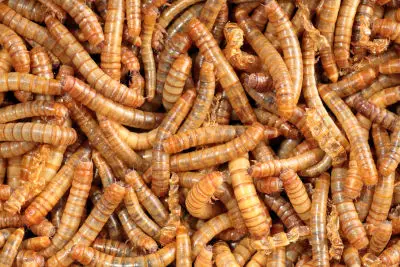Is It Bad to Have Lizards in Your House? Exploring the Pros and Cons
Having lizards in your house may seem like a nightmare for some people, while others may find them fascinating and harmless. The truth is, having lizards in your house can be both good and bad, depending on the situation. In this article, we will explore the pros and cons of having lizards in your house and answer the question: Is it bad to have lizards in your house?
Lizards are common household pests that can be found in many parts of the world. They are known for their ability to climb walls and ceilings, and their quick movements can startle many people. While some species of lizards are harmless and can even be beneficial by eating insects and other pests, others can be dangerous and carry diseases. It is important to know the type of lizard you are dealing with and the risks associated with it before deciding whether to allow it to stay in your house.
| Are these foods dangerous for your Beardie? | |
| Avacado? Click here to learn, from this guide, if this food is dangerous |  |
| Superworms? Click here to learn, from this guide, if this food is dangerous |  |
Overall, the answer to whether having lizards in your house is bad or not depends on your personal preference and the type of lizard you are dealing with. This article will provide you with the information you need to make an informed decision and help you understand the benefits and drawbacks of having lizards in your house.
Understanding Lizards
Lizards are a diverse group of reptiles that belong to the order Squamata. They are found in almost every part of the world, except for the polar regions. Lizards have a unique set of characteristics that make them distinct from other reptiles.
Basic Characteristics
Lizards have a long, slender body with a tail that can be as long as the body. They have four legs and are covered in scales. Lizards are cold-blooded, which means that they cannot regulate their body temperature and rely on external sources of heat. They are also oviparous, which means that they lay eggs instead of giving birth to live young.
Habitat Preferences
Lizards have a wide range of habitat preferences. Some species prefer arid regions, while others prefer tropical rainforests. Some species are arboreal, which means that they live in trees, while others are terrestrial, which means that they live on the ground. Some species are even semi-aquatic, which means that they can live both on land and in water.
In general, lizards require a warm and humid environment with access to water and shelter. They are often found in areas with plenty of vegetation, such as forests, deserts, and grasslands.
Overall, lizards are fascinating creatures with unique characteristics and habitat preferences. While some species can make interesting pets, it is important to understand their needs and behavior before bringing them into a home environment.
Potential Risks of Having Lizards in the House
Health Concerns
While lizards are generally harmless and beneficial to have around, there are some health concerns associated with having them in your house. One potential risk is salmonella, a type of bacteria that can be found in the feces of reptiles. If you or a family member come into contact with lizard feces or contaminated surfaces, you could become ill with salmonella. Symptoms of salmonella infection include diarrhea, fever, and stomach cramps.
Another health concern associated with lizards in the house is allergies. Some people may be allergic to lizard dander or droppings, which can cause symptoms like sneezing, coughing, and itchy eyes. If you or a family member have allergies, it may be best to avoid keeping lizards as pets.
Property Damage
In addition to health concerns, having lizards in the house can also lead to property damage. Lizards have sharp claws and teeth, which they may use to scratch or chew on furniture, walls, and other household items. They may also leave droppings on carpets, upholstery, and other surfaces, which can be difficult to clean and may cause stains or odors.
If you have valuable or delicate items in your house, it may be best to keep lizards out of those areas to prevent damage. You can also take steps to protect your furniture and other household items by providing lizards with appropriate toys and scratching posts, and by keeping their claws trimmed.
Overall, while there are some potential risks associated with having lizards in the house, these risks can be minimized with proper care and maintenance. If you are considering keeping lizards as pets, it is important to do your research and make sure you are prepared to provide them with a safe and healthy environment.
Benefits of Having Lizards in the House
Lizards are often seen as unwanted guests in the house, but they can actually provide some benefits. Here are a few reasons why having lizards in the house can be advantageous.
Insect Control
One of the most significant benefits of having lizards in the house is that they are natural insect control agents. Lizards feed on insects such as mosquitoes, flies, and cockroaches, which are common pests in many households. By feeding on these insects, lizards can help keep their population under control, reducing the need for chemical insecticides.
Biodiversity
Having lizards in the house can also contribute to biodiversity. Lizards are an essential part of the food chain, and they can serve as prey for other animals such as snakes and birds of prey. They can also help pollinate plants by carrying pollen on their bodies, contributing to the growth of vegetation around the house.
In conclusion, having lizards in the house can provide some benefits, including natural insect control and contributing to biodiversity. While they may not be the most welcome guests, they can be useful in their own way.
How to Manage Lizards in Your House
Lizards can be a nuisance when they invade your home. Fortunately, there are ways to manage them without harming them. Here are some tips on how to manage lizards in your house.
Prevention Methods
The best way to manage lizards is to prevent them from entering your house in the first place. Here are some prevention methods:
- Seal all cracks and crevices in your walls, floors, and ceilings.
- Install screens on windows and doors.
- Keep your house clean and clutter-free.
- Remove any standing water from your house.
Removal Techniques
If you already have lizards in your house, here are some ways to remove them:
- Use a humane lizard trap to catch the lizards and release them outside.
- Use a broom or dustpan to gently sweep the lizards into a container and release them outside.
- Use a lizard repellent spray to deter them from entering your house.
It is important to note that killing lizards is not a recommended method of managing them, as they play an important role in controlling insect populations.
By following these prevention methods and removal techniques, you can effectively manage lizards in your house without harming them.